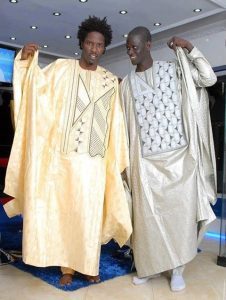Senegal, a West African country known for its rich cultural heritage and diverse population, has a dress code that reflects its traditions, values, and social norms. The Senegalese dress code is deeply influenced by factors such as religion, climate, and history. This essay will delve into the details of the dress code in Senegal, discussing both traditional and contemporary clothing styles, while providing in-text citations to support the information presented.
Traditional Dress:
Traditional Senegalese clothing is often characterized by vibrant colors, intricate patterns, and flowing fabrics. One of the most iconic traditional garments is the “boubou,” a loose-fitting, ankle-length robe worn by both men and women. The boubou is typically made from colorful textiles, and its design can vary across different regions and ethnic groups in Senegal (Smith, 2010). It serves not only as a form of clothing but also as a representation of cultural identity and social status.

Another significant traditional garment is the “thobe,” which is worn mainly by Senegalese women. The thobe is a long, loose dress often adorned with intricate embroidery and embellishments. It is paired with a matching headscarf known as a “moussor” or “turban,” which varies in style and color based on personal preference and occasion (World Culture Encyclopedia, 2020). These traditional garments are often worn during important cultural and religious events, signifying the preservation of Senegal’s cultural heritage.

Religious Influence:
Religion plays a pivotal role in shaping the dress code of Senegal. The majority of Senegalese people are followers of Islam, which greatly influences their clothing choices. Modesty is a key principle in Islamic dress, and many Senegalese individuals opt for clothing that covers the body, such as long robes and head coverings (Hancock & Dwyer, 2016). For men, this might involve wearing a “serwal,” a type of loose-fitting pants, along with a “kufi” (a rounded cap), while women often choose to wear “hijabs” or “abayas” to adhere to Islamic dress guidelines.
Contemporary Dress:
In urban areas and modern contexts, contemporary Western-style clothing is also prevalent, particularly among the younger generations and in professional settings. However, even when wearing Western clothing, Senegalese individuals often incorporate elements of their traditional dress, such as headscarves or accessories, to maintain a connection with their cultural heritage (Diouf, 2003).

In conclusion, the dress code of Senegal is a blend of traditional and contemporary clothing styles, influenced by factors such as religion, climate, and culture. Traditional garments like the boubou and thobe hold significant cultural and social meanings, while Islamic principles guide modesty in clothing choices. In modern contexts, Senegalese people often infuse elements of their cultural heritage into Western-style clothing, maintaining a strong connection to their roots.
